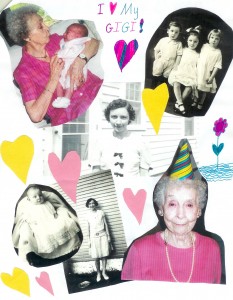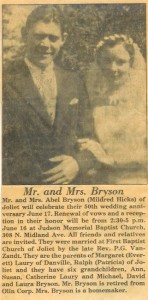Not long ago I walked with my kids from our home in Joliet to my Grandmother Millie’s house to pay her a friendly visit. The distance is nine-tenths of a mile: long enough for me to get a little exercise, but not so far that my young kids can’t handle it.
Every time I make that walk, I reflect on how lucky we are to live in such close proximity to Gram; and how fortunate it was for me growing up here in Joliet, where I could walk or bike to both of my grandparents’ homes. I often zipped over to Grandma Millie’s in the summer to help Grandpa in his garden, then eat cookies and quaff Dr. Pepper while listening to the Cubs game with Gram.

These days, urban planners rightly extol the virtues of walkable neighborhoods, where people can stroll from their homes to the post office, train station, school, grocery store, barbershop, and park.
Yet in most American communities, walking is an endangered pastime. Consider the contemporary perversity of driving half a mile to the health club to run five miles on a computerized treadmill. Alternatively (and far more cheaply), I just look for any practical excuse to go walking — like my grandparents did in their day.
Gram was a champion walker most of her life, though it wasn’t always so. As a teenager living on Joliet’s West Side during the Roaring Twenties, she was dropped off at Joliet Township High School downtown by her doting father on his way to work. She wore high-heeled shoes to school and was pleased as punch about it.

But then she met Abe Bryson, the son of a laborer whose family was always two steps ahead of poverty. Since his family couldn’t afford a car, Abe walked everywhere — including when he took his stylish new girlfriend Millie out on a date, or gallantly carried her across a muddy cornfield to keep her shoes and stockings clean.
When she once groused after hiking downtown to a Joliet ice cream parlor, he looked down at her feet disapprovingly and said, “Well, maybe you should get yourself a decent pair of shoes, Mil.” Sufficiently smitten with his charms, Gram wasn’t about to let Abe walk out of her life on account of, well, having to walk. So she got some good sensible shoes, and their relationship blossomed.
My grandparents’ walking habits during their courtship and young marriage in the Great Depression would stagger a typically slothful American these days. They thought nothing of walking from Reed Street on the West Side all the way to Pilcher Park on the East Side (over five miles) and then hiking the park’s trails before taking a streetcar home. On Saturday mornings, they’d hoof across the river to deliver my Great-Grandmother Bryson’s home-made donuts to her regular East Side customers.

98 years old and blind, Gram’s just about done with walking. Hobbled with a recent hip injury and in the twilight of her life, she’s mostly confined to her bed. But up until recently, she had gingerly moved through her little house, feeling her way along, getting her exercise the best way she knew: walking.
Now that her high-stepping days are finally done, I sense she’s preparing for that last long walk home — the place we all walk to someday.
This essay is an edited version of my monthly op-ed column which appeared as “‘Grandma Millie’ Sets Pace for the Family” in the 12 July 2012 edition of the Joliet Herald-News. My current residence in Joliet is walking distance from my childhood home, which is the very house where my Grandma Millie grew up after my great-grandparents built it in 1925.
To learn more about my Grandma Millie, I highly recommend this interview conducted by my then-eight-year-old daughter, Lily, one day in May of 2010 in Gram’s kitchen (pdf).